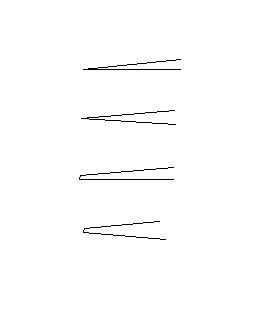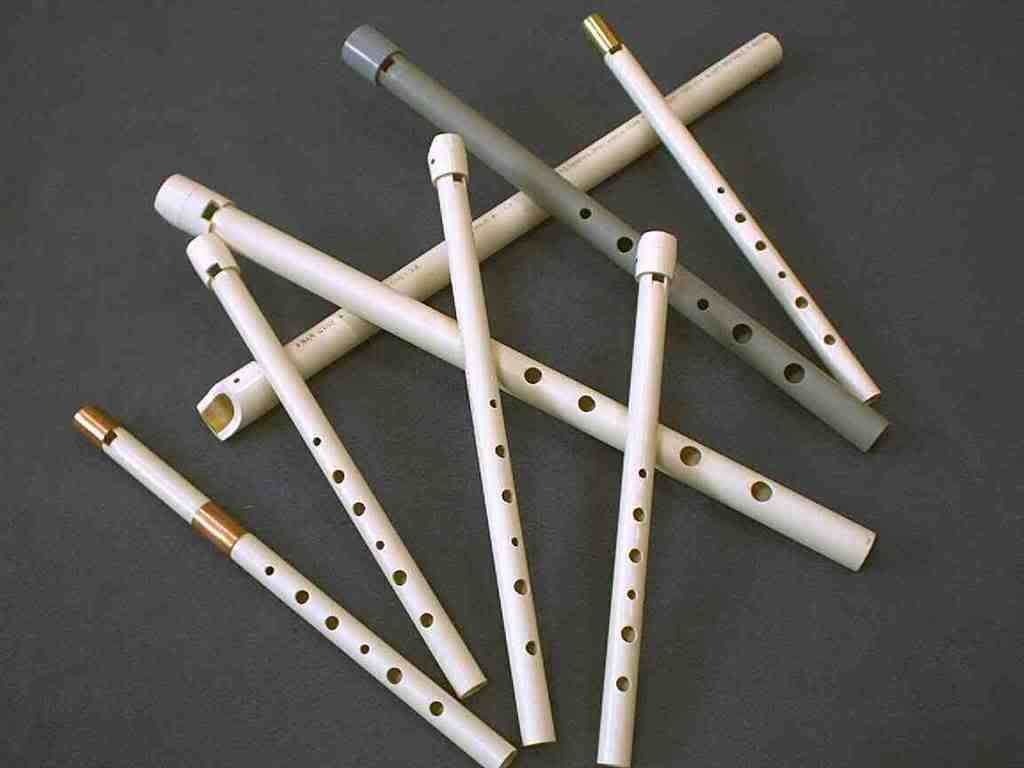Here's a rough drawing I did in MS Paint:

Do any of those look right?
By the way, I'm just doing this for myself. I don't have any intention of becoming a commercial maker later on.

Then you need to copy that design in all details. That would be the easiest route to achieve your goal. The fipple blade or lip is just one factor. But I recommend rounding it a little for a softer, less shrill tone. If it is very sharp you get high frequency noise additions due to extra turbulence. I think this is a reason why wooden whistles and recorders have a softer tone. Because the wooden lip is by nature of the material already a bit rounded at the edge. A metal lip is quite sharp when first cut, and needs extra filing and sanding to make it a bit round at the edge, which is often not done, thereby producing a harsher tone.Thomaston wrote:Oh yeah, I should mention I guess that my ultimate goal would be to make a whistle that plays and sounds similar to a narrow bore Burke. The one I made sounds like a mediocre Clarke.
Congratulations on the first whistle! And welcome to the slippery slope.Thomaston wrote:what is the best design for the lip? Should the end be pointed, rounded, or squared off?
You have mentioned, Parks, Burke, Mellow Dog, Dixon, Gonzato - whew. Why not make a Thomaston first. Every whistle out there has a lot to offer in learning to make whistles. Trying to make something that sounds like a narrow-bore Burke-ish whistle out of 1/2" CPVC is quite a task. A good whistle can be made from 1/2" CPVC as evidenced by the Water Weasels of Glenn Schultz. The whistles pictured in my avatar are made from that stuff too. I've made many, many whistles from that stuff. So where do you start. Well, you've already started! I'd suggest you go back to Guido's designs and first mimic his head design. You can get some of the breathiness under control by extending the length of the outer mouthpiece by slotting it to match the width of the voicing window and letting the collar extend along the sides beyond the blade edge to form organ ears.Thomaston wrote:Yep, it's the ivory cpvc, with an inner bore of 1/2 in. I think this is what Carey Parks uses for the Every whistle. Unfortunately, I don't have a Burke for measuring. I've got a Mellow Dog and a Dixon Trad, and used the Trad as a template for the first one.

If you have a D shaped profile at the exit of the windway at the voicing window it should be more breathy or weak. You could flatten the top of the block just up to end (which would still have a C shape) and that should help increase the velocity if the air. You would still want to put a slight bevel on the exit edge of the plug. There are lots of options to test and that's the much of the fun of it. Keep track of your experiments and their results. Thankfully the materials are not very expensive. Let us know when you decide you need a lathe.Thomaston wrote: I'm thinking of sanding the top of the block a little to give the windway more of a D shape instead of a C shape. I figure that will increase volume, but I worry it will also increase the breathiness.